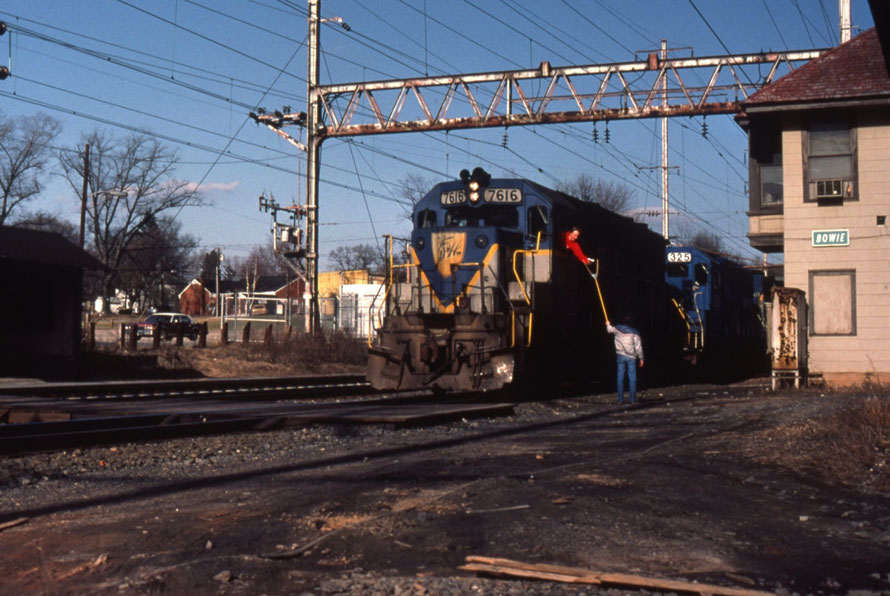
The interlocking tower, while not totally gone, has virtually vanished from the railroad scene. Whether it was a humble one story shanty or a magnificent two, three or more stories tall building, they once served a vital function. Some controlled where double track went to single; others controlled where two or more railroads crossed; others controlled a vast and complex passenger station “throat”.
Towers could be built to a particular railroad’s standard blueprint, but they all had their own personality. It was easy to recognize a certain railroad’s tower. Pennsy had it own look, as did the New York Central, Erie and the rest, but no hard and fast rules applied, even within the same railroad.
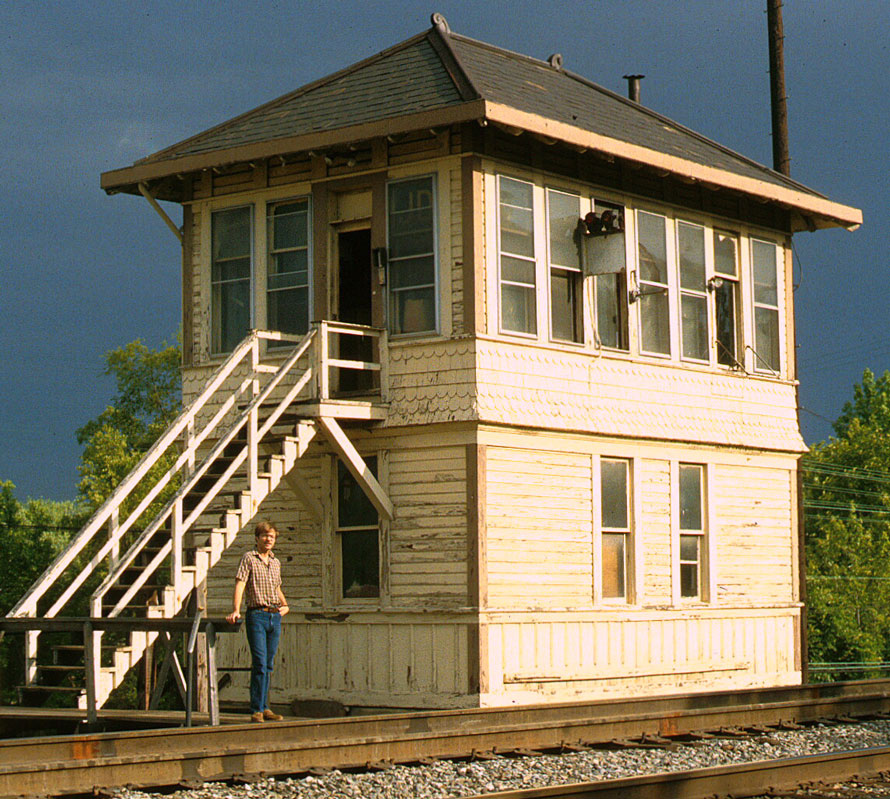

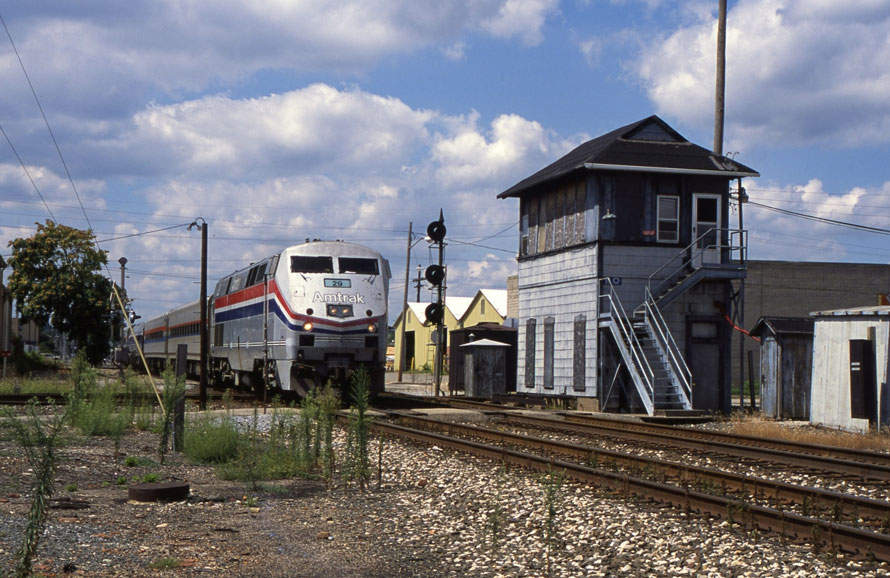
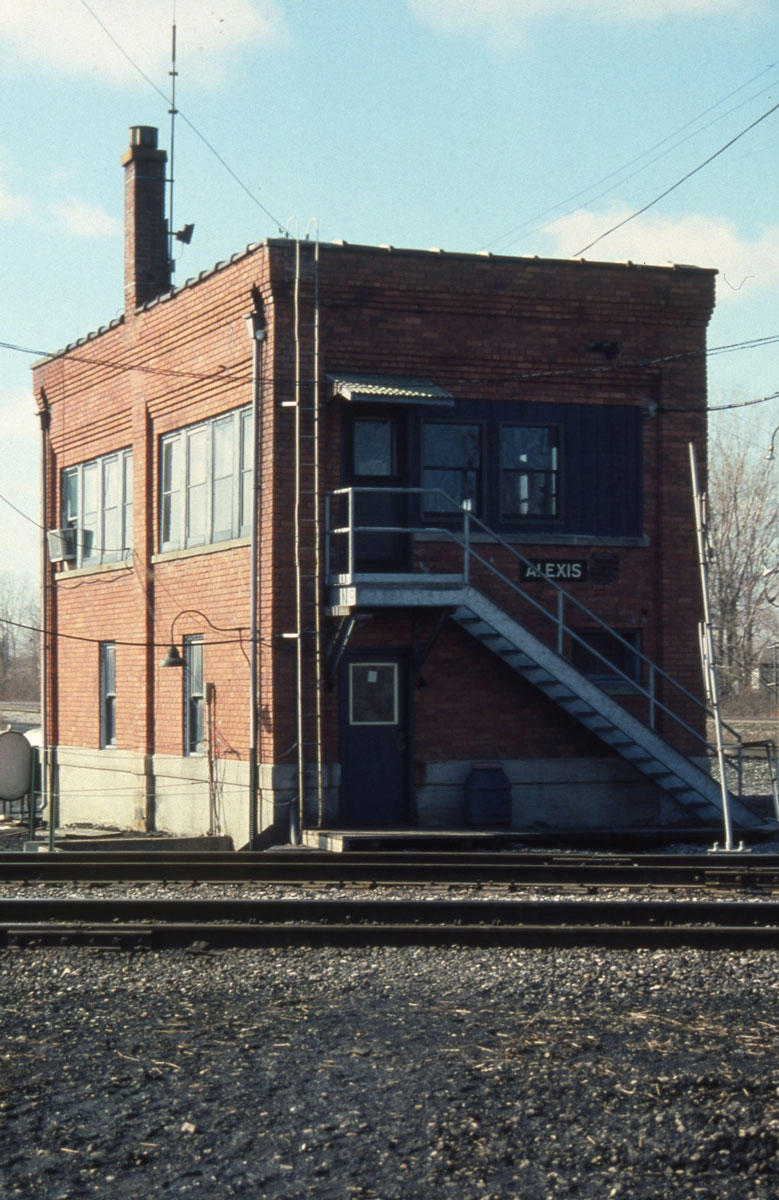
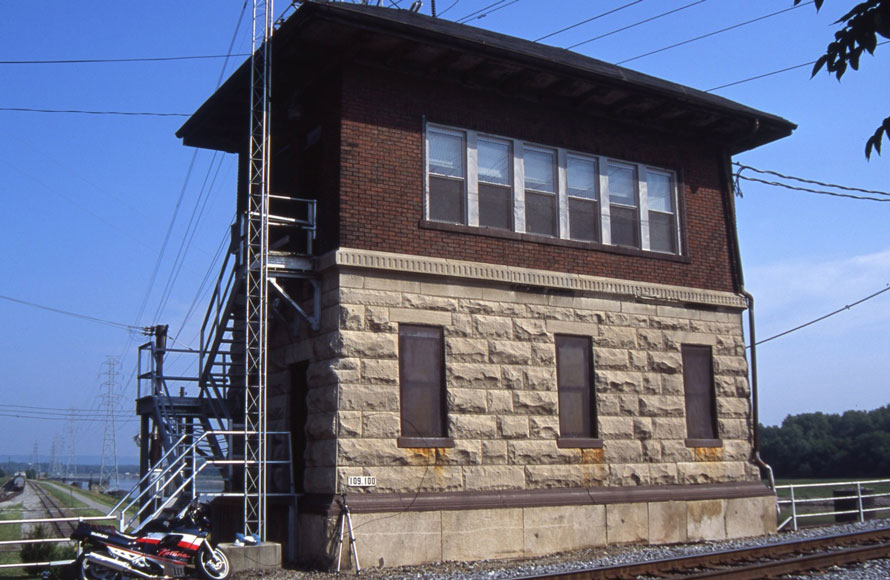
The inside of an interlocking was a fascinating and magical place.
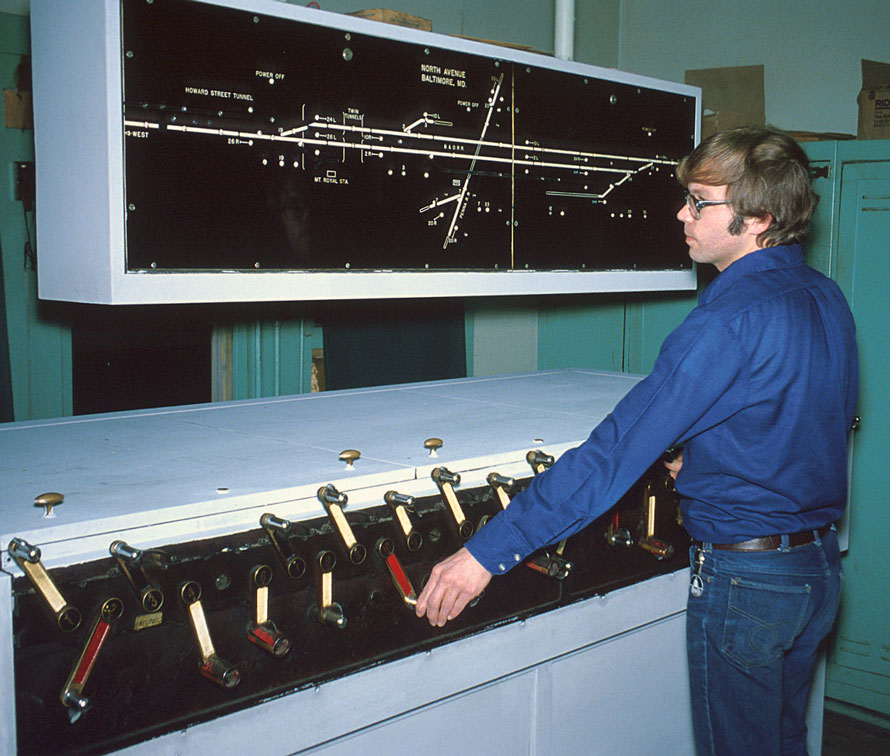
Watching the operator going about his duties was a sight to behold. There was always something going on; the constant chatter on the dispatchers line, the “ding” of the bell notifying that a train was “on the circuit “, or the operator transcribing a train order. The special smell of the grease used to lubricate the throw rods added to the ambiance.
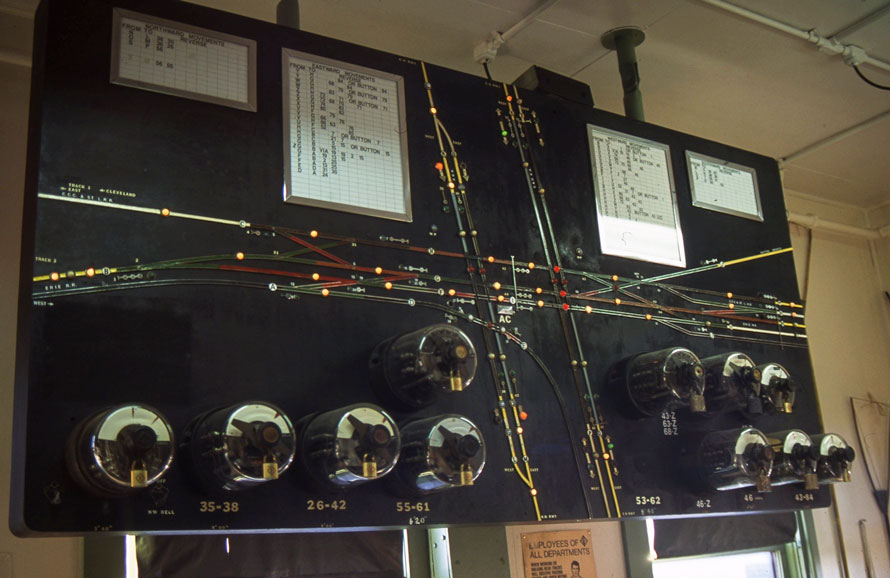
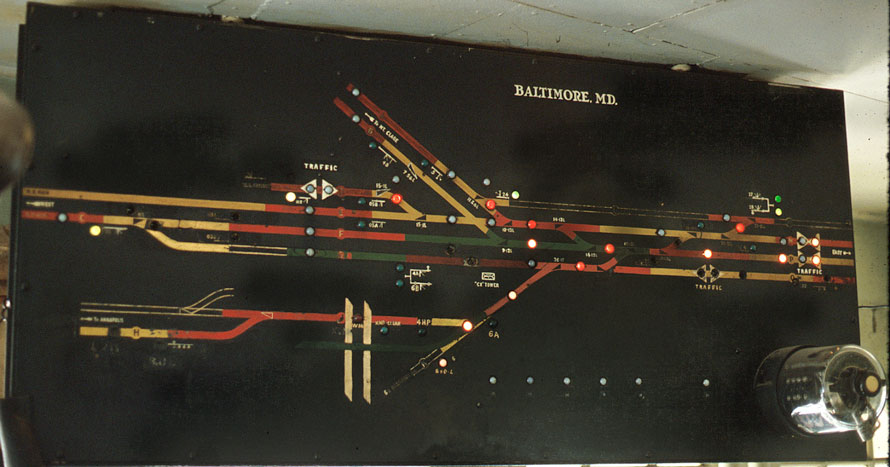
With the advent of CTC, radios, and more recently computers, it is now possible to control hundreds of miles with only one dispatcher. Downsizing the physical plant and outright abandoning of portions of the railroad helped hasten their demise.
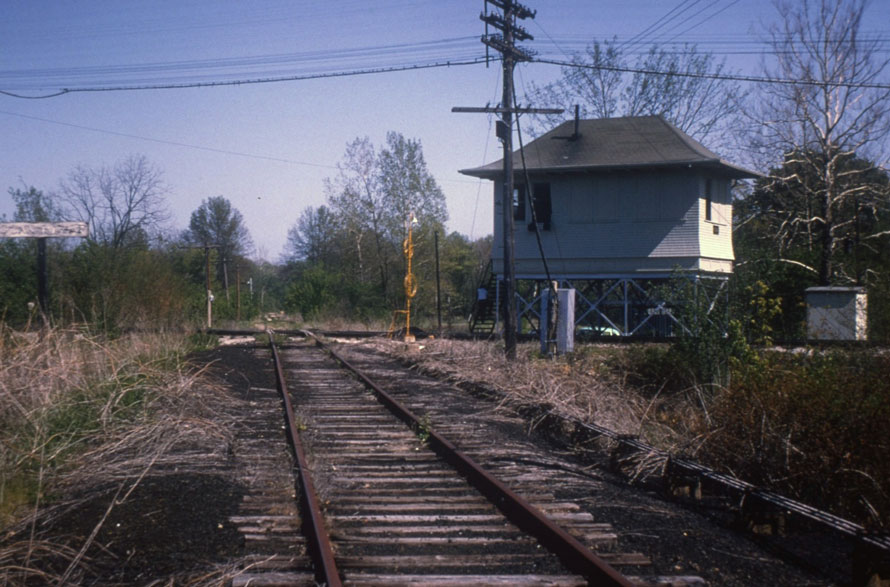
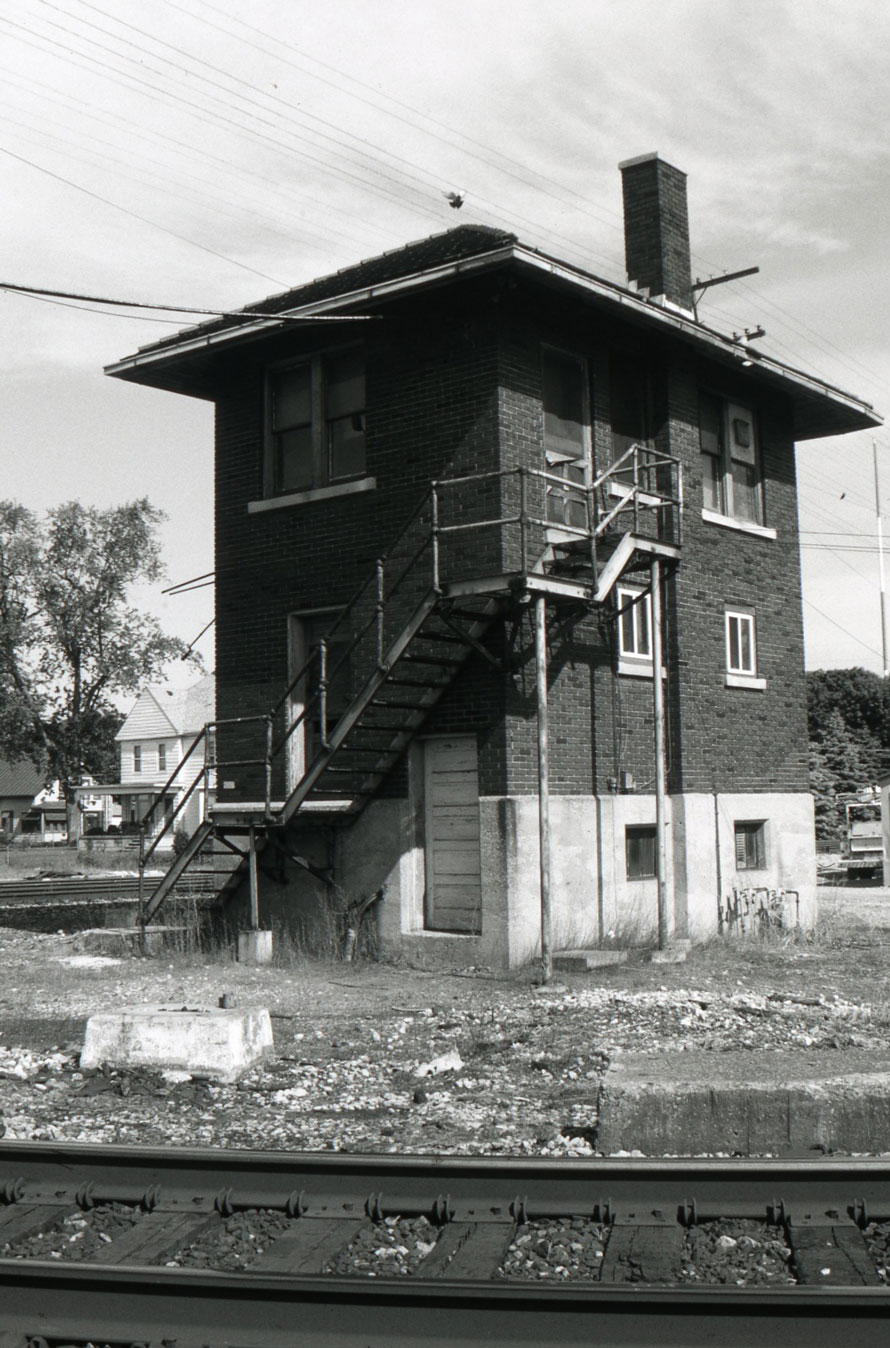
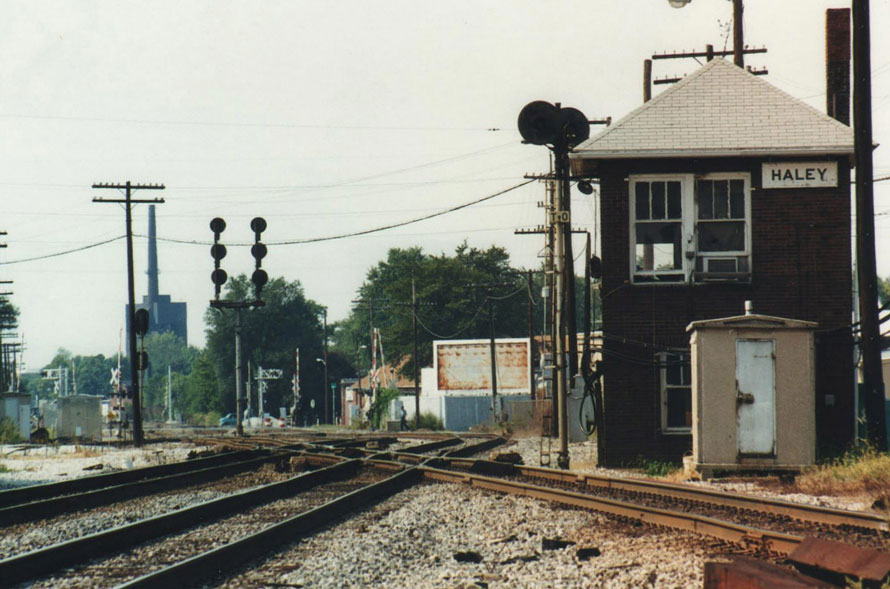
Dan Maners – Text Copyright 2016
Photographs Copyright 2016 by the photographer credited in the photo captions.
See more of Dan’s work at his website: North American Interlockings.
You can actually operate one at the Harris Tower in Harrisburg PA. They’ve hooked the interlocking up to a computer that simulates track detection, the delay between action and response, etc. The train schedule dates to 1943 (if I remember right) and you hear train announcements recorded by actual tower operators. The best railfan experience I’ve ever had! http://harristower.org
That sounds like a great way to get a flavor of what it was like when towers ruled the rails. Thanks for sharing!
I’ve always been interested in towers and signaling – thanks for the post!
Harris Tower is definitely worth the visit, but it’s sometimes hard to get to since they only open weekends in the summer. I shot this video there a couple of years ago….
Jon, what a great video–it’s almost like being there! Great job, thanks for sharing
Dan, terrific article. The towers provided many new employees with the operating and communications training that launched them onto careers in railroading. Progress is inevitable, but it is unfortunate that the “Brotherhood of Railroad Telegraphers” can no longer provide invaluable experience. Very few towers survive today, but one worth visiting is the SONO Switch Tower Museum, open summer weekends 12-5pm from May through October.
http://www.westctnrhs.org/tower.htm
Thanks for the comment Bob. I want to get to the SONO museum one day. I would like to meet you,Dale Martin and “King Farouk” sometime. I met John Garafalo(Chief) at the PCHS meeting back in 2015.